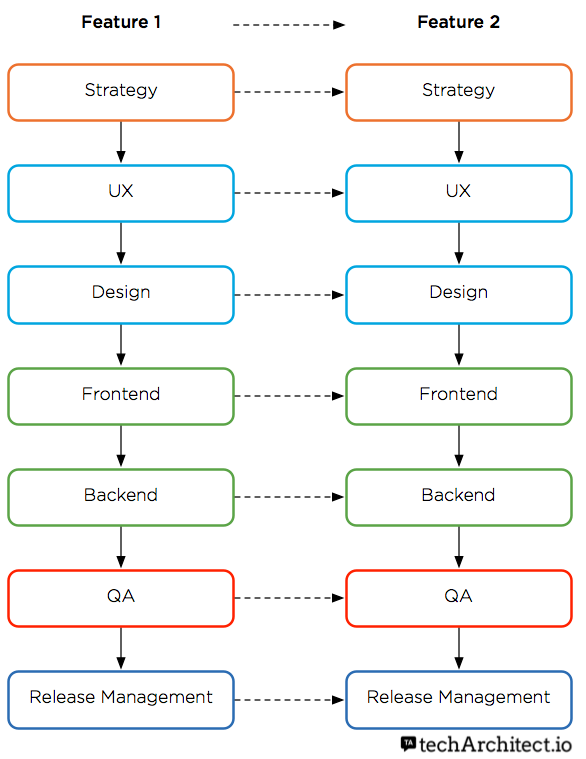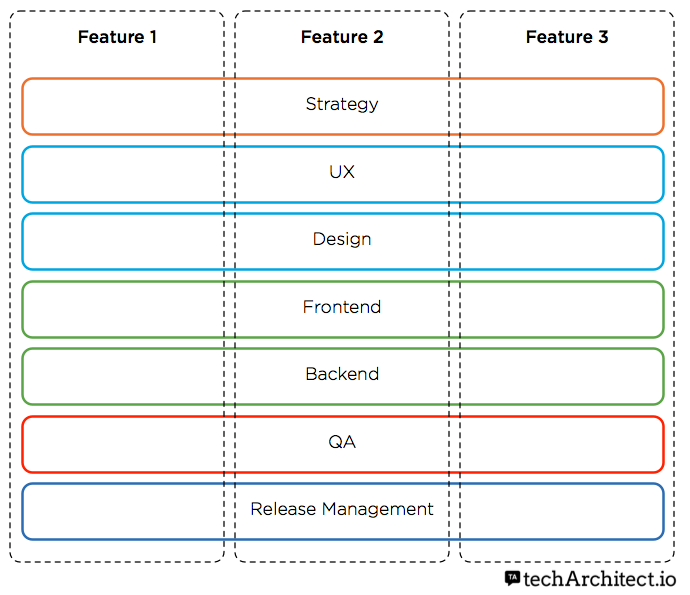UX -> hands of to Creative -> hands off to Dev -> hands off to QA. Sounds familiar?
Teams that work as separate disciplines and in isolation are destined to be inefficient, inflexible and costly to manage. It has been proven many times that teams that are vertically aligned work better and are more nimble and productive.
Although not apparent at a high-level, how teams are structured and collaborate have a direct impact on the underlying architecture, which could be costly in the long run. This is specially true in organizations that work in functional silos and departments, which is a result of a management approach that prioritizes ease of management rather than engineering efficiencies. This doesn’t mean that discipline teams and structures should not exist, just make sure your teams, the ones working on the same project, are highly coupled and are vertically aligned.
This will require you to separate the management organizational structure from the way your teams and resources operate within the context of a project.
There are several studies and research that back the above statements – the most known one is Conway’s Law – “Organizations which design systems… are constrained to produce designs which are copies of the communication structures of these organizations”.
Visually, the issue would look something like Fig 1. In this case, you can see how different silos hands off their work to the next silo in the workflow, and moves on to work on the next feature. For instance, Strategy hands their work to UX, and then just starts the work on the next feature, without worrying or being part of the process afterwards.

On the other hand, teams that work in a highly collaborative fashion will look more like Fig 2. In this scenario, all disciplines are highly involved in the development of all features. UX cares about what they are producing and delivering to not only design, but technology too.

Bottom line – design that is built in isolation, or teams that continuously avoid thinking outside their own discipline are destined to produce reckless designs, and sometimes compromise the underlying architecture. This goes both ways – not pointing fingers to anybody or hurt susceptibilities.
References
- Wikipedia – Conway’s Law
- O’Reilly – Building Evolutionary Architectures – Neal Ford, Rebecca Parsons & Patrick Kua